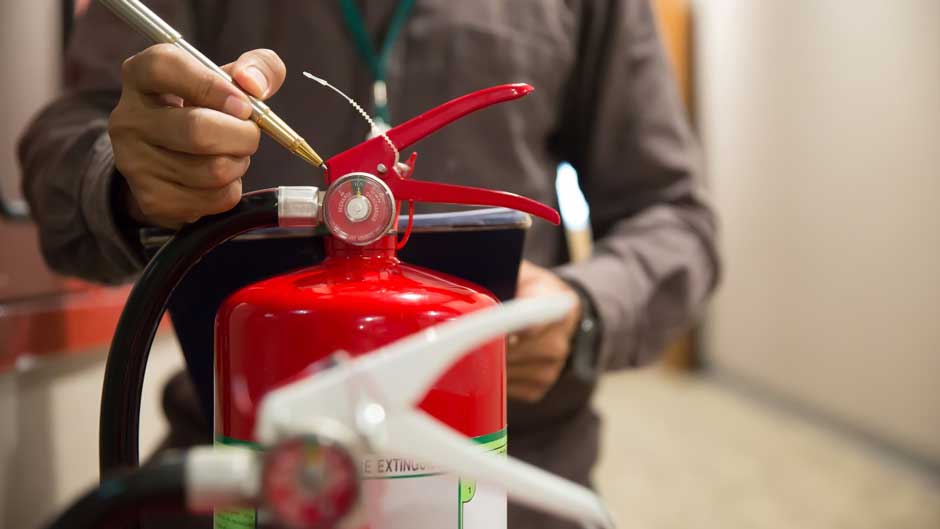How Can You Conduct a Complete Fire Risk Assessment in Your Company

A business can only be run successfully and securely if proper fire safety measures are put in place. A fire risk assessment is one of the most important steps you should take to ensure workers’ safety at your facility. With this process, it is easier to spot fire dangers, analyze the threats and apply solutions to lessen or remove these risks. Being aware of the steps in this process shields employees, customers and property against the serious dangers of fire.
Conducting a complete fire risk assessment is needed in many regions and it is also a helpful way to prevent accidents in a business. It means spending time on planning, checking everything up close and reviewing often to respond to any changes in the workplace. Below, we will explain the important ways to carry out a proper fire risk assessment which can reduce risks of fires in businesses and help people stay safe.
Understanding the Purpose of Fire Risk Assessment
Fire hazards within a company’s premises are the main concern of a fire risk assessment. Such hazards could be ignition sources, materials that burn or anything that makes a fire more likely or worse to occur. When these hazards are noticed, business owners and safety officers can give top priority to handling them.
It also measures the risk of harm to people if a fire happens. Everyone who is present at the place of work such as staff, visitors, contractors and others falls into this category. Realizing the various weaknesses of these groups allows you to create measures that keep everyone protected. As an example, areas most visited could benefit from simpler evacuation paths and more fire safety notices.
Preparing for the Assessment Process
It is necessary to collect detailed information on the building and its routines before you start the risk assessment process. This means getting familiar with where everything is, what the construction is made of and what takes place in the building each day. Knowledge of these details helps to accurately find out where a system could be at risk.
Getting employees to take part in the preparation can be helpful as well. Many times, workers see issues that could be hazardous and these details are not always noticed by the managers. Promoting open sharing of ideas and teamwork makes everyone feel that they are responsible for avoiding fires.
Conducting a Detailed Inspection
Then, it is important to visit the main premises in order to see the fire risk areas with your own eyes. The inspectors make sure to check electrical systems, storage of flammable materials, heating devices and the level of housekeeping in the building. Watching out for these details may help you notice risks that could have gone unnoticed before.
It matters to make sure that fire equipment including a fire extinguisher and fire blanket are visible and fully operational at the time of inspection. The proper installation and maintenance of fire equipment help limit fires at an early stage. Inspectors should make sure that all emergency exits are unblocked and clearly displayed for everyone to see.
Evaluating and Recording the Risks
As soon as the inspection is completed, the potential risks should be looked at closely. You should check the risks of a fire breaking out from each hazard and also think about the possible impact. Giving risk ratings helps direct your priority list by focusing on what matters the most at the moment.
Documenting all the findings is an important part of the assessment. When everything is logged in detail, it becomes easier to review the dangers and record the efforts to resolve them. It demonstrates that the business follows all the necessary fire safety laws. It is important to have recommendations for better results, timing for proper management and names of people handling the tasks.
Implementing Fire Safety Measures
After evaluating and noting the risks, organizations should put measures in place to reduce or get rid of the dangers. Sometimes, tasks like fixing broken wires, improving storage places or upgrading fire protection items are required. Teaching workers how to handle fires and use fire blankets makes them better able to handle emergencies.
Cleanliness around your home is another good measure to protect against fires. Tidying up office areas greatly reduces the risk of fire spreading rapidly. Proper maintenance and inspections of fire safety systems will keep the equipment effective and ready whenever called upon.
Reviewing and Updating the Assessment
Fire risk assessment needs to be done continually, not only once. Companies should arrange periodic checks to consider any recent adjustments made in the workplace such as acquiring new items, reorganizing or adding workers. The results of these reviews help maintain an up-to-date and helpful fire safety plan.
Whenever a close call or accident happens, a review should take place as quickly as possible to identify the problem and address it in the future. It is important to stay ready and focused on improvement to ensure safety is well maintained. Using fire blankets and other protective tools during training at these reviews increases everyone’s safety knowledge.
Conclusion on Conducting Fire Risk Assessments
Every business that cares about its people and assets should make sure to complete a thorough fire risk assessment. Regularly assessing risks, looking for hazards and using proper measures leads to fewer and less serious fires in companies. With the help of fire blankets and continuous training, the impact of emergency plans is much greater.
Fire safety requires ongoing attention and commitment. A focus on risk assessments helps businesses prevent risks which increases both workers’ and customers’ confidence. Knowing how to do the assessment correctly helps ensure the company’s safe and successful operations in the long term.
